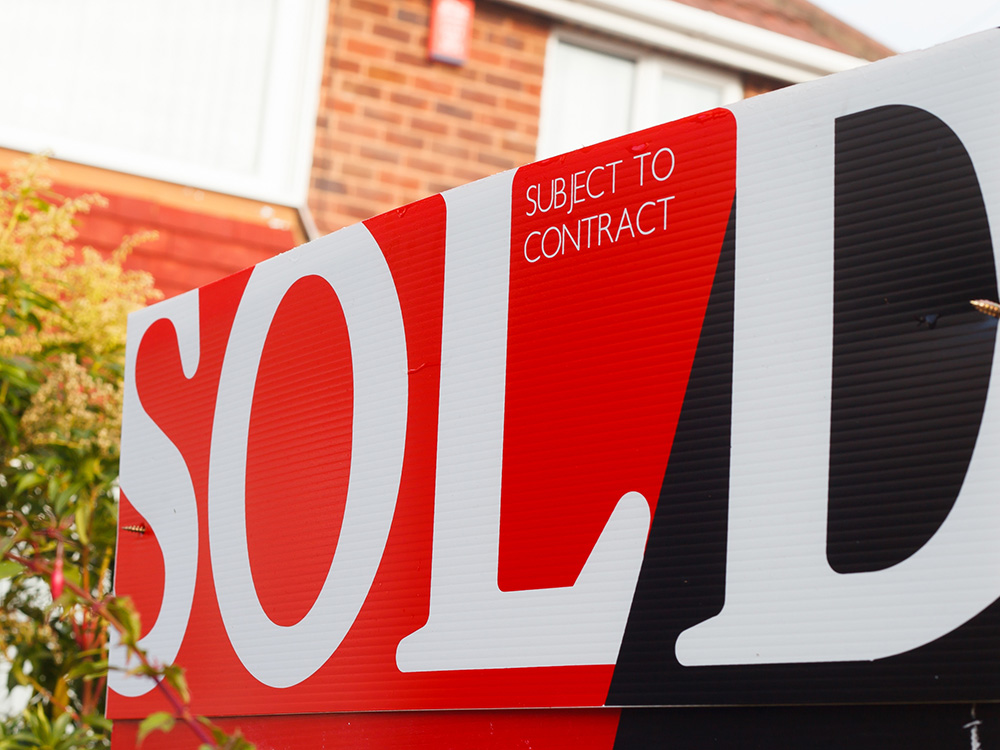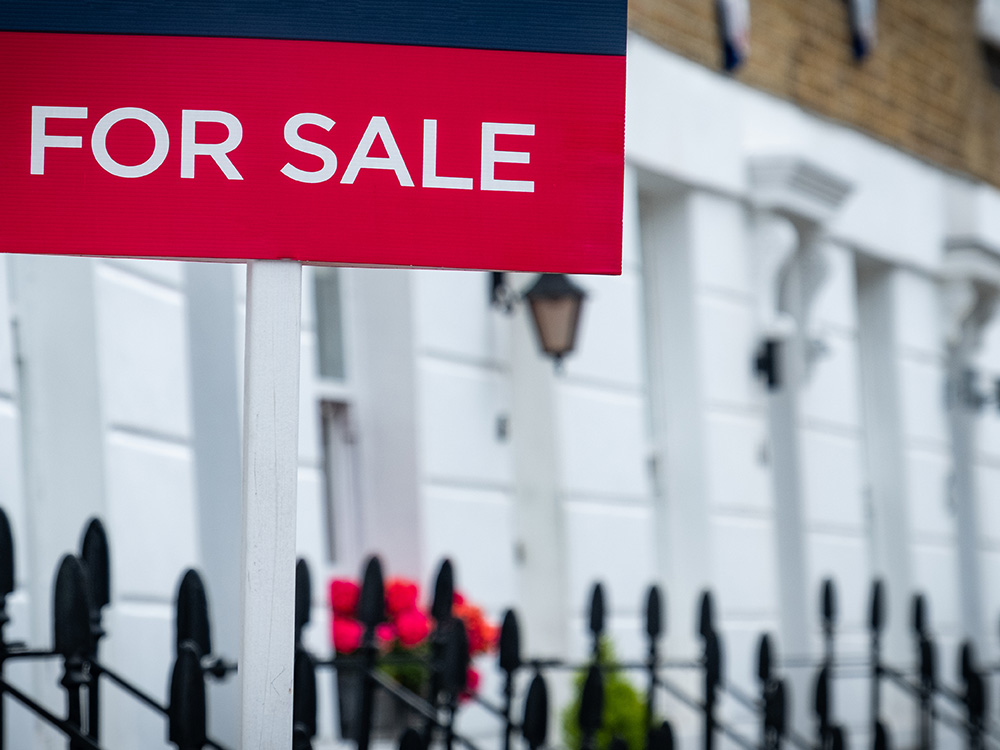On this page
How to buy a house before selling yours 73% of all buyers have been chain-free! Seeking alternative finance to buy your next property So what is bridging finance and how does it work? Does the home buying process differ when using bridging loans? How is a bridging loan repaid? A bridging loan may be the best solution for you for four reasons:How to buy a house before selling yours
It is sometimes difficult to buy a house while selling a house in the UK and when a property chain breaks it can cause chaos in the chain both up and down stream. But how can you avoid it when it happens to you?

73% of all buyers have been chain-free!
So far in 2022, 73% of all buyers have been chain-free, up from 69% in 2021 and a low of 65% in 2010, according to Hamptons. This may, in part, be in response to the rise in property chains collapsing throughout 2021 that has forced property purchasers to seek alternative finance in order to ensure they're not affected when their chain break occurs.
In fact, when you consider the reasons for chain breaks from gazumping to gazundering - the opposite of gazumping, is when a property seller has accepted a lower offer from a buyer, it's no surprise that Scotland has redrawn the battle lines of the process of buying and selling property. In Scotland, it's simply untenable to make an offer if you're part of a chain as you risk losing your deposit if you don't complete.
So if you're thinking that you want to buy your next property before selling an existing property you own, here's how you can do exactly that.
Seeking alternative finance to buy your next property
Bridging finance is a short term finance solution, usually lasting for a term of no more than 24 months that can be secured on property. Because the loan is secured on property the lender's capital is guaranteed which means the criteria for the loan is often far easier to meet than a traditional mortgage. Whilst it's typical to secure the loan against the new property purchase it could alternatively be secured against your existing property.
So what is bridging finance and how does it work?
Bridging finance, also known in the industry as a bridging loan, gives borrowers the money they need for almost any purpose, including buying property. Bridging finance helps sellers complete property purchases through short term loans. They effectively help you position yourself as a cash buyer which is one of the best positions to be in when attempting to purchase property.
Bridging finance requires the loan to be secured against a property by way of a 1st or 2nd charge and it typically lasts 12-24 months. The rates you'll be charged are higher than traditional mortgages as they're deemed riskier by the lender and the rates are also affected by a myriad of factors. For example, the loan-to-value, property type, location and condition are considered by the lender.
The loan interest is usually rolled up into the loan itself which means there are typically zero monthly payments, instead there is just one lump sum payment at the end of the loan term. This is why having a viable way to repay the loan is essential and a lender should only accept your loan application where you have a viable exit strategy. Not having monthly payments means two outcomes for the borrower. Firstly the borrower doesn't have the headaches of trying to service the debt during the loan period. Secondly all that interest is compounded throughout the duration of the loan which means the average rate of interest is much higher as you're effectively paying interest on the previous month's interest.
Does the home buying process differ when using bridging loans?
Typically, the traditional process of purchasing a property begins in the first step when you accept an offer on your current property and arrange for a mortgage on the new property. The mortgage lender will then give you an agreement in principle on the property that you want. Bridging financing is different because you do not have to wait until someone makes an offer or buys your property. In other words, you're relying on the bridging finance for the funds to purchase rather than a traditional mortgage.
How is a bridging loan repaid?
The bridging loan repayment is due from you when the term ends. These are often called exit strategies or repayment schemes. Most people who apply for bridging loans are looking at buying a property before their existing property sells and as such, they use the sale proceeds of the property sale as the method of repaying the loan. When you arrange a bridging loan, the lender or broker will discuss the options for repaying the debt.

A bridging loan may be the best solution for you for four reasons:
TO SECURE YOUR FUTURE HOME, YOU MUST ACT QUICKLY.
The number of houses on the market might rise or fall as market conditions change. Finding your perfect property when you're ready to move might be tough during periods of low supply, and competition among buyers can be fierce.
You might be looking for a one-of-a-kind character home, the ideal home near a local school, or a property that's ideal for downsizing when you're nearing retirement. When you find the perfect home, you must be ready to act swiftly and be in a solid position, with financing already in place, to avoid losing out.
If your own property is on the market but taking too long to sell, you may want to consider other short-term financing options to help you pay for your new home. Even if you are fortunate enough to find a buyer immediately after putting your home on the market, some variables may cause the transaction to be delayed, affecting your purchase. You don't have to wait with a short-term funding solution like bridging finance.
It's possible that you haven't yet considered putting your existing residence on the market. Short-term financing, such as a bridging loan, might essentially turn you into a cash buyer if you've already found the perfect home. This would allow you to act swiftly in order to secure the next house before other potential purchasers did, giving you time to place your present home on the market and sell it before repaying the loan with the proceeds.
If you can't complete the purchase quickly enough, your seller may reject your offer halfway through the process. They may want a quick closing for a variety of reasons, and bridging finance might assist keep your dream home purchase on track.
YOU WANT TO AVOID POTENTIAL OBSTACLES OR ELIMINATE UNCERTAINTY.
While we all hope that our property sales will proceed well and fast, this is unfortunately not always the case.
You may have heard the phrase 'gazumping,' which refers to when a seller accepts a higher offer after they've already agreed to yours. Gazumping is still as common today as it was in the 1980s and 1990s.
It can happen right up until the contracts are exchanged and you both have a legal obligation to buy or sell. Even if the seller accepts your offer, they are not obligated to sell. That's why you'll see 'sold' signs with 'subject to contract' or 'STC' printed underneath them outside properties.
If you've had an offer accepted on a property that's generating a lot of interest, a bridging loan can help you go in front of other buyers and put you in a chain-free position that's appealing to sellers.
Due to the unpredictability and reliance on others, buyers and sellers may be cautious of being a part of a property chain if they have had negative moving experiences in the past. They don't want history to repeat itself, thus they try to avoid becoming entangled in a chain whenever feasible. Buying your new house first can help you secure your new home by reducing the length of the chain.
BEFORE YOU MOVE INTO YOUR NEW PROPERTY, YOU WANT TO RENOVATE IT.
It's not uncommon to buy a 'fixer-upper' or a newly purchased home that needs some work to repair or modernise it. Because it's not much fun to live next to or on a construction site, some buyers may opt to modify their new homes before moving in. It might also be true that the property you're hoping to move into is simply unmortgageable in its current state. For example, if it has no bathrooms or a kitchen then high street lenders will not want to lend against it.
In some circumstances, it may also make sense to remain in your current property until the new one is ready to live in. Some properties may require extensive repairs that could take weeks or months to complete. It may be more convenient to live in your current house while renovations on your new home are underway, and bridging can enable you to do so.
YOU WANT TO GET THE MOST MONEY FOR YOUR EXISTING PROPERTY.
You may be able to buy your new property before selling your old one, allowing you to wait for the ideal time to sell - maximising its sale price. It's possible that the economic conditions for selling aren't optimal, and it's best to wait a bit before attempting to sell. However, this does not have to prevent you from purchasing your new property; a bridging loan may be a possibility.
Some people purchase and move into a new property so that they can make modifications to their previous one before selling it. As a result, they may be able to command a higher asking price for your property, particularly if purchasers don't need to replace the kitchen and bathroom, for example.
Residential Bridging Loan
A residential property bridging loan is fast, flexible bridging finance for property purchases. Buy-to-lets, HMOs, properties with short leases, property flips, investment purchases can all be financed, as can fixing chain breaks or mortgage delays, and refinancing an existing property loan. These loans require residential property or a group of properties as security.
Discover More




